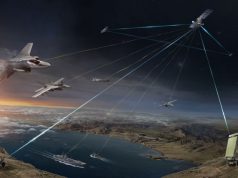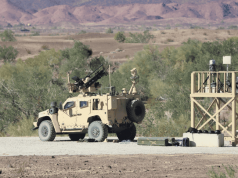
US Marines forward-deployed to Australia as part of the Marine Rotational Force-Darwin (MRF-D) completed exercise Southern Jackaroo 22, a tri-lateral infantry integration exercise featuring marines and sailors with MRF-D, Australian Defence Force (ADF) members, and Japanese Ground Self Defense Force (JGSDF) personnel.
Southern Jackaroo 22 took place at the Shoalwater Bay Training Area in Queensland between May 10 and May 31, and incorporated 400 Australian soldiers, and nearly 100 Japanese soldiers, along with a Marine Corps rifle company from 3rd Battalion, 7th Marine Regiment.
The three allied forces combined to share tactics, techniques, and procedures while also enhancing interoperability capabilities. The exercise demonstrated how three of the Pacific’s premier partners can combine and form a unified and lethal combat team to ensure safety and security in the Indo-Pacific.
“Considering the current world situation, the trilateral exercise is very significant, and it is very useful for improving the capability of units and all soldiers,” JGSDF training commander Lieutenant Colonel Ryozo Asano said.
Led by the ADF’s 7th Brigade, Southern Jackaroo 22 implemented a crawl, walk, run concept of combat integration and interoperability. The partnered riflemen cycled through training lanes consisting of small arms close combat, patrolling, and mechanized maneuver, along with other training events to enhance the strengths of the three forces.
“Exercise Southern Jackaroo 22 is a great example of how our regional partners integrate with Australian force elements to conduct realistic combat team training for combat operations,” Commander of the 7th Brigade, Brigadier Michael Say said. “Our combined capability to coordinate ground force assets demonstrates adaptability and interoperability that can be applied to disaster relief or warfighting operations.”
The three-week exercise included a variety of live-fire and combined arms training. One initial training lane provided Australian, Japanese, and US infantrymen the opportunity to clear buildings together in an urban environment.
Another training lane allowed the three forces to utilize Australian M113 personnel carriers to close with and destroy simulated enemy targets quickly and under effective suppression.
“Our marines and sailors had a great experience at SOUTHERN JACKAROO training alongside our ADF and JGSDF teammates,” emphasized US rifle company commander Captain Jack Morgan, the senior USMC exercise leader. “The tactics, techniques, and procedures we shared and practiced here demonstrate that this team is a force capable of working together across the spectrum of military operations.”
Another unique aspect of this year’s exercise was the addition of a long-range casualty evacuation from Shoalwater Bay to Darwin. MRF-D utilized an en-route care team aboard an MV-22 Osprey to transport and treat a simulated casualty following a force-on-force event. The Osprey maneuvered from the Queensland training area back to RAAF Base Darwin, utilizing aerial refuel and the critical care team from MRF-D’s Role II facility. The CASEVAC demonstration required coordination from every element of the MAGTF and highlighted the agility of the force.


























